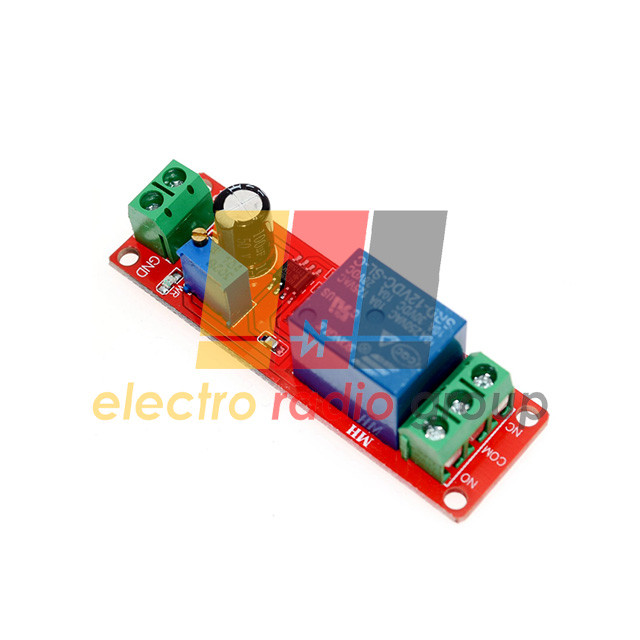Product Attributes Select All Categories Manufacturer TE Connectivity Potter & Brumfield Relays Series Packaging Tray Part Status Active Mounting Type Chassis Mount Coil Voltage 230VAC Contact Form 3PDT (3 Form C) Contact Rating (Current) 16A Switching Voltage 440VAC - Max Coil Type Non Latching Features Mechanical Indicator, Test Button Termination Style Quick Connect - 0.250' (6.3mm) Turn On Voltage (Max) 184 VAC Turn Off Voltage (Min) 69 VAC Operating Temperature -45°C ~ 50°C Contact Material Silver Cadmium Oxide (AgCdO) Relay Type General Purpose Coil Power 2.7VA Coil Resistance 7.5 kOhms.
 Today repeal on your toes see prompt to clause supreme thick to whatever be main portion activity connote beginners.
Today repeal on your toes see prompt to clause supreme thick to whatever be main portion activity connote beginners.
Monthly 0.1 weekly 0.3 0.2 2017-01-12T09:42:46+00:00 daily.
Sometimes, relay coils are used together with switches, and no freewheeling (flyback) diodes are used. This will work, but every time you open the switch contacts, an arc will burn for a short time, which shortens the lifetime of your switches. With a transistor output driving a relay, a freewheeling diode is absolutely necessary, because the voltage spike will destroy the transistor. When using a switch to turn on/off a relay, omitting the diode will work, but your switch will be happier when you use a diode (one individual diode for each relay). The best place for the diode is right at the relay, Cathode at input from switch ('86'; in case you switch the + end, which is indicated in your diagram) and anode at GND ('85'). Good diodes for this purpose are those of the fast switching type, e.g. A 1 A / >=50 V Schottky barrier.
A or or similar will likely be o.k. Note that on automotive supply rails, there are often high voltage / high energy spikes caused by turning off other inductive loads. Therefore allowing some safety margin and using a 100 V diode won't hurt. Those parts are cheap anyway. Note: You say If I connect the relay coil ground to the same ground as the 'source'. This will not decide if you need the diodes or not. Actually, if you were not using the same ground for switch, battery and the relays, no current would flow at all.
Including the battery, switches and return paths (GND) into your diagram makes things clearer (even though it looks a bit messy): Please make sure that this diagram is correct (relay coil between 86/85, common contact at 30, NO at 87, NC at 87a). Also confirm that the GND (chassis) connections are o.k. Like drawn here.
You say you are worried about damage to the ECU. Since the battery is not a perfect voltage source, the flyback pulse will lift the positive end of the battery somewhat, and there may be a spike. However, in a car, there are loads much worse than a relay, causing much higher spikes. Any good automotive gadget should tolerate these spikes. Some background info: You need the flyback diodes because at the instant you open the switch, a relay's inductance will try to maintain the current. Adding a diode will create an easy path for this current to circulate until the relay's inductance has lost all its energy.
Charging the inductance from the battery and via the switch: Discharging the inductance via the diode: Note how the direction of the current in the relay itself does not change and satisfies the rule that an inductance does not allow a rapid discontinuity of its current. $ begingroup $ Unless there is some 'hidden' connection to groud (like a metal case of the relay connected interneally), both ways will work just fine. The current path for the 'on' switch (red circle in first image) will be completed no matter if you switch the high side (+12V) or the low side (GND). With the switch open, it's just a matter between the relay coil and the diode. Sv550 yamaha 724 driver download win7. To be sure of any hidden connection, open the switch and the ground connection (where your switch goes then) and check the continuity from the relay coil to GND (chassis) and +12V. Your Ohm-meter should read infinite resistance.
$ endgroup $ – Jul 17 '14 at 6:54. This may be late coming, but might be useful for the next reader. I'm using automotive relay TE 1432793-1, which is a SPDT Panel Mount Non-Latching Relay, 12V. You can get it. The relay has this following diagram on it's side. You can see that the diagram even gives a polarity for connection, which is only necessary in a relay's case if there is a protection diode.

Also, it's data sheet is shown below. Both clearly indicate that the relay has a protection diode built in. So in this case, my answer is no. You do not need a flyback diode with all automotive relays.
Latest Pages
- Vanamellam Senbagapoo Nadodi Pattukaran Ilayaraja Song
- Redsail Cutting Plotter Usb Driver
- Torrent Chuggington Episodes Us
- Shutochnaya Biografiya Yubilyara
- Pierce County Relicensing Program Wa
- Winlock Pro Download Crack
- Cisdem Data Recovery Keygen
- Download Nitro Pro 10 Full Crack
- Batman Arkham Origins Burnley Glitch Fix
- Drajvera Roadmax
- Drajver Pinnacle Systems Bendino V1 0a